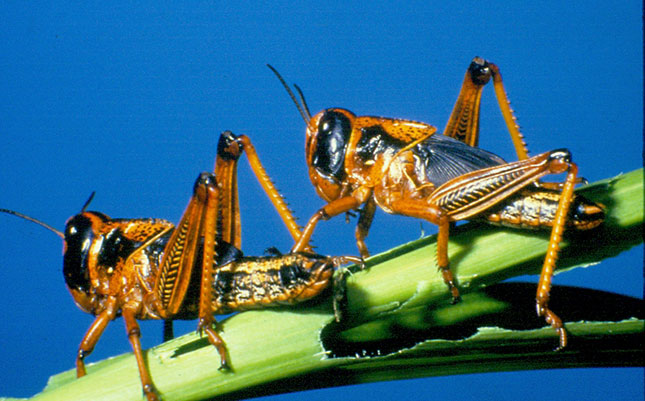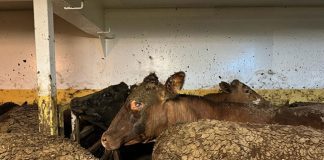
Photo: Dr Roger Price
New outbreaks of the brown locust Locustana pardalina have been reported over a wide area of the Central and Upper Karoo in January and February 2021 following good rain.
The initial outbreaks started in late September 2020 in the eastern and south-eastern Karoo and produced large migrating adult swarms in late November 2020 that invaded the south-eastern Free State towards Bloemfontein and threatened to invade Lesotho before being tracked down and controlled.
At the time of writing, the Department of Agriculture, Land Reform and Rural Development (agriculture department) confirmed that it was fighting new hopper outbreaks in Hopetown, Steynsburg, Britstown, Carnarvon, Vosburg, Loxton, Victoria West, Upington, Keimoes and Griekwastad.
Dr Roger Price, research team manager at the Agricultural Research Council, said brown locusts should not be confused with the desert locusts that have decimated crops in Eastern and Northern Africa and formed swarms of up to 400km² in size.
Brown locusts were endemic to the semi-arid Karoo areas of South Africa and southern Namibia, formed smaller swarms and did not produce the same devastating cycles as the desert locusts.
“Over the past 40 years, brown locust plagues have occurred in 1985/1986, 1989/1990, 1994/1995, 2002/2001 and 2010/2011. The current outbreak is not yet intense enough to be classified as a plague, but it is the first major outbreak in the past 10 years,” Price says.
While no major damage had yet been reported from the current outbreaks, brown locusts could cause extensive damages to crops, with most damage caused to grazing veld, especially in areas with poorer-quality veld where the locusts were in direct competition with sheep for forage. Swarms escaping from the Karoo could also cause damage to maize and sorghum crops in the Free State and beyond.
Price said that an outbreak was to be expected sometime around now, due to the Karoo and various other parts of the country suffering consecutive droughts over the past few years, followed by good early summer rain in 2020.
“The droughts have led to a build-up of solitary locust populations and dormant locust egg deposits over a wide area, which have now hatched and multiplied thanks to the rainfall and resulting abundance of forage. The biggest problem we have with locust control at the moment is that outbreaks are so widespread in the remote Karoo areas that the delay in communication between farmers reporting locusts and the locust spray teams being able to find the locust targets allows some locust outbreaks to escape,” Price says.
Farmers were urged to report outbreaks as soon as possible to their local District Locust Officer or to the agriculture department’s locust depots at De Aar and Upington.











